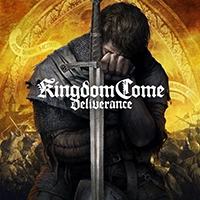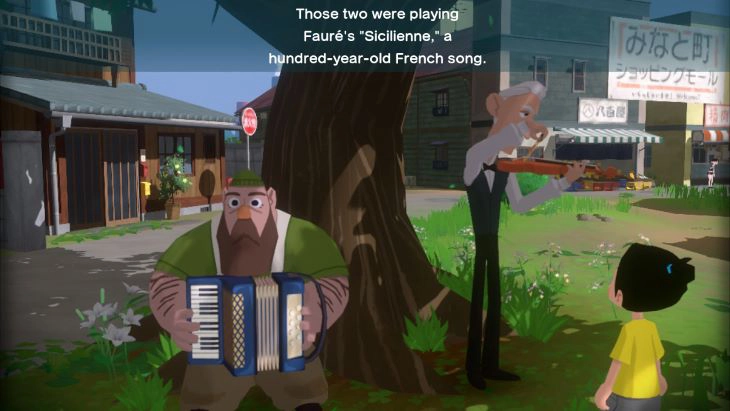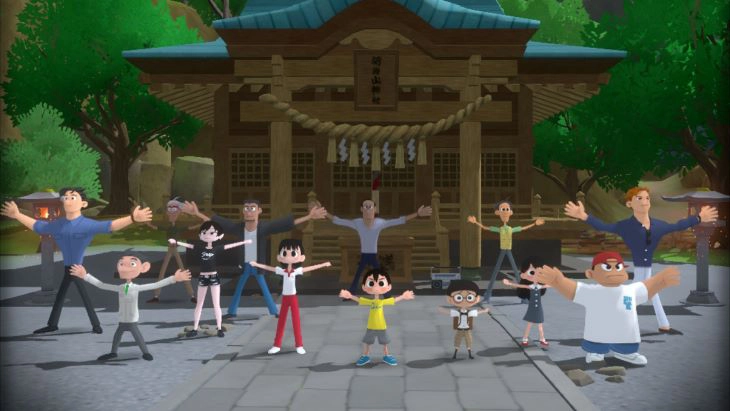
When we were children, the simplest things brought a sense of excitement to us. Playing games with other neighborhood friends, catching bugs, picking up weird knickknacks, and other things that as adults, we don’t tend to take part in. It can be nice to step back, unwind, and let yourself just take in the sights around you. Natsu-mon: 20th Century Summer Kid brings that sense of curiosity as you spend your summer break in a rural town.
You play as Satoru, a young boy who ends up in Yomogi Town due to his parents and their circus troupe. For the entire month of August, he’ll spend his days and nights doing as he pleases. However, there are a few things that he’s nudged into thanks to members of the town. In no time, Satoru will find himself running all around the outskirts of the town, collecting a multitude of items, filling out his journal, completing tasks for the village people, and enjoying everyone’s company.
There are some dialogue choices that you can choose during cutscenes, although most of the time you’ll be able to select all of them. These choices do not affect anything in the story or how other the characters interact with you after a conversation is done. But it’s kind of nice to see the different responses, especially since Natsu-mon: 20th Century Summer Kid leans heavily into its comedic side. A lot of the themes and characteristics of the story are what you’d see happening in Japanese anime and it brings a feeling of nostalgia.

As you explore around, random events will trigger, allowing you to see a new side to the townspeople.
While the game is open-ended in how you approach it, there are some events you can participate in, if you’re not sure how to spend your days. Characters will approach you asking for your assistance with a task, or you could end up stumbling into predetermined event. Many days will be slightly different from the norm, which is a great change of pace if you ever find yourself lulled into a sense of sameness with the passing days.
As you get acquainted with the townspeople and explore the areas around Yomogi Town, you’ll be given quests to help guide your exploration. The quests tend to fall into the category of collecting items/bugs/fish, exploring a certain area and reporting back with what you’ve found, or climbing large structures that a young boy probably shouldn’t be climbing. As you complete quests, you’ll earn additional stamina and sometimes money, which makes exploring around much easier.
Along with the adult townsfolk, there are some young children that have their own detective club, where they investigate the strange happenings around the town. Each kid will bring their own issue up in the club meeting, although mysteriously, you end up being the main detective in charge for all of them. But it’s a cute way of diversifying the types of quests you end up doing, as well as a great way to get you to explore the outskirts, as many of their investigations take place outside of Yomogi Town.
Natsu-mon: 20th Century Summer Kid is a life sim where you control Satoru and his general day to day. While the game will sometimes give you specific quests and events to do during some days, you are free to fill up your days however you wish. Every morning, you’ll start off you days with breakfast. Once evening hits, it’s dinner time. After each day, you’ll fill up your journal with anything interesting that happens, sketching out the incident and attaching a blurb and a stamp. The game operates on a day and night cycle, and you are forced into bed if you end up staying up too long. The only consequence that comes of this is missing morning exercise at the shrine.
You’re given a map of the area around Yomogi Town that is available to explore to your hearts content. The map also shows where certain townsfolk are at any given time, provided you haven’t already spoken to them. The character icons mainly show that there is new dialogue that the character has to say. Sometimes the dialogue is interesting enough to warrant talking to them, but there are some times where making a trip out may not have been worth it, especially since there are only so many hours in the day.
As you explore the outskirts, the characters will span out into the outskirts, unlocking new events for you to come across. Along with that, there are items, bugs, and fish that can only be found in certain areas of the map, so you’ll want to try and explore around as much as possible.
There is a fast travel system in the form of the bug system. If you have bus tickets, you can call the bus from wherever you are and ride to any of the bus stops that you’ve unlocked. To unlock bus stops, you just have to interact with them. However, this does mean that you need to keep your inventory of bus tickets in stock, because if you run out, you won’t be able to call the bus from anywhere. In those cases, you’ll have to find a bus stop and then ride the bus.
Among all the shenanigans that you can get up to, you’re able to collect creatures in the environment for your journal. You will be given all of the equipment from the adults around you, who will encourage you to explore around. Any insects that you haven’t caught will be displayed with a circle around them, making it easy to pick out the ones that you still need for your collection. Catching a bug is simple: all you need to do is approach the bug and swing your net down to capture them. Some bugs are finicky and will run around if you don’t approach them quietly. While the gameplay of catching bugs is simple, it’s an easy rhythm to fall into when you see a bug that you haven’t caught yet. Just when you think there can’t be any other bugs to find, out of your peripheral you see a new bug waiting to be caught and recorded in your journal.
There isn’t a similar functionality for catching fish. While you can look for hints of fish based on shadows in the water, there is no indicator whether you’ve caught them or not until you reel them in. So you’re mainly just praying for something new to hook on. For fishing, you’ll need bait, which you can get from picking up or purchasing earthworms and crabs. Once you throw out your line, you have to wait until you see the text “Hit” before you can reel the fish in. If you reel in too early (such as when you feel the first nibble on your hook), the fish will swim away. Compared to bug catching, fishing isn’t as quick or dynamic and involves a bit of patience. Of course, you could always dive into the water and catch the fish by hand, if you wanted to quicken the process. It adds a fun twist to fishing that otherwise would be a laid back experience.
Finally, you are able to pick up specific items. All across Yomogi Town, there are gems, bottles, and other miscellaneous items to pick up. Most of the items that you pick up can either be sold or handed into the museum for appraisal (and later storage depending on what is appraised). At first, money isn’t a resource that you’ll really need, but as the days pass, you’ll find that you’ll need as much money that you can get your hands on in order to unlock more interesting items and events.
Natsu-mon: 20th Century Summer Kid makes use of 3D models for the characters, setting itself apart with its textures that look as though they come straight from a sketchbook. Since the models aren’t simplistic when compared to other games, the choice to lean into the cartoony aspect of the game was a nice touch. Likewise, the additional of the journal and the cute childish drawings were lovely to unlock as you unlock different events.
Most of the game’s dialogue is voice acted, with a few exceptions. All of the characters have their own charming voices, both standing out in their own way while also not sticking out in a way that would negatively impact the game. Everyone just feels like regular people going about their day to day. And of course, Satoru’s voice actor is the star of the show, showing the wide range of a curious boy ready for the next adventure ahead of him.

After breakfast, you have the option in participating in morning radio exercises with the residents of Yomogi Town.
The soundtrack and ambient noises are just as charming, with the music fitting right into the rural backdrop of the game. And while the music will set you right into a nostalgic mood, filled to the brim with piano, chimes, and guitar, the ambient noises really set the scene for the game. Cicadas buzzing all around and birds cawing round out the feeling of being right in nature.
When it comes to Natsu-mon: 20th Century Summer Kid, it’s hard to not be charmed by the cast of characters, as well as the setting of Yomogi Town. While you’re basically spending your days catching bugs, fish, picking up items, and talking to the villagers, Satoru’s reactions to the events around him make this an enjoyable title. It’s lovely to have a relaxing game to sit back and experience the joys of something as simple as catching a new butterfly or finding the last diamond to complete your collection. For those looking for a laid back life sim to experience, Natsu-mon: 20th Century Summer Kid is definitely worth taking a look at.
Rating: 8/10.